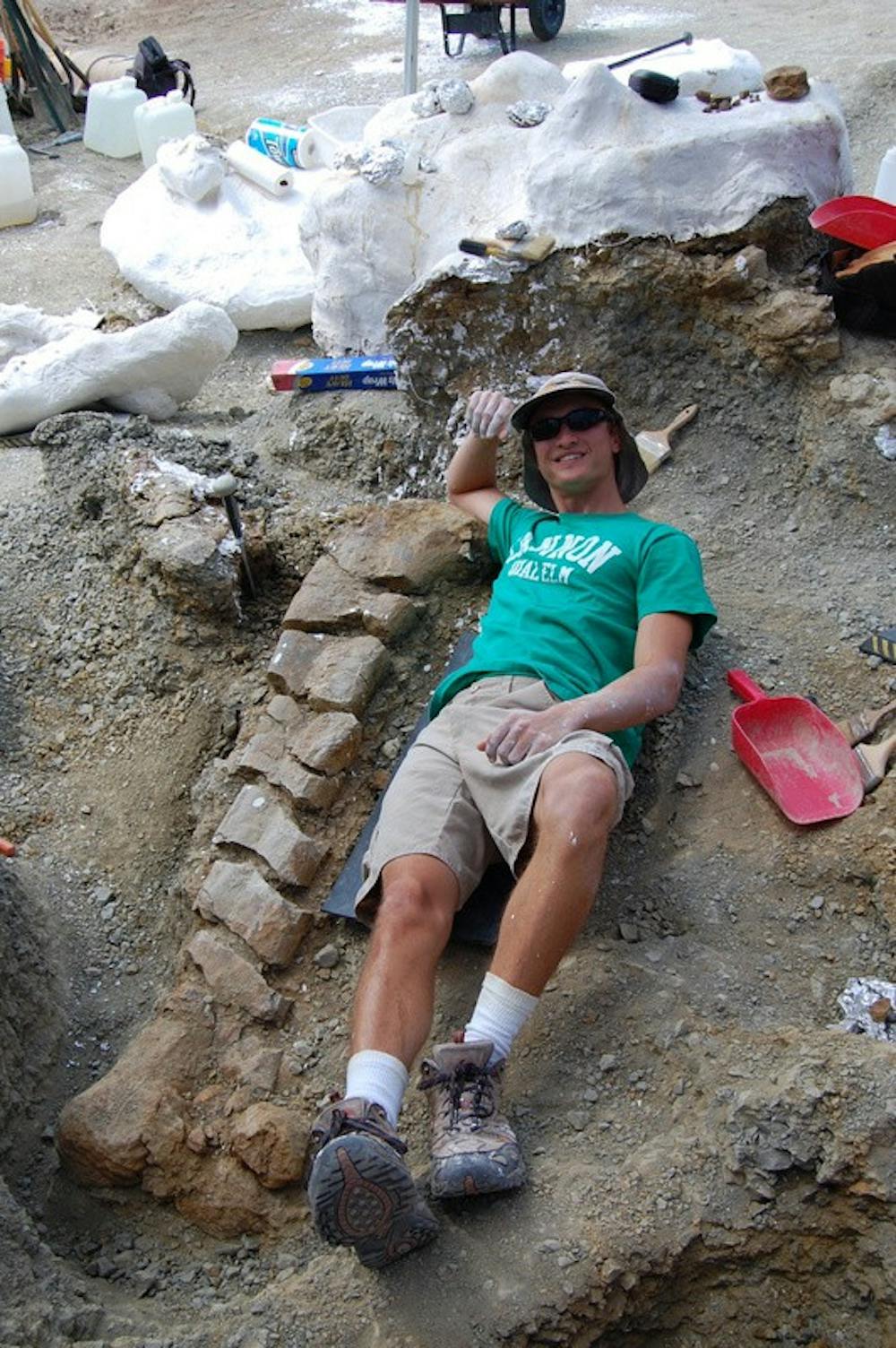Evan Saitta ’14 discovered a new way to distinguish between male and female stegosauruses while completing his senior thesis research in central Montana this summer. Made possible by high-power CT scans of dinosaur stegosaur bone plates and comparisons with tibia bones, the discovery may provide the first evidence for female sexual selection in dinosaurs.
Saitta has spent five summers working to uncover fossils at the Little Snowy Creek site. He said that he first observed the sex-specific differences between fossils two summers ago, but only confirmed his findings with CT scans this summer.
“In paleontology there has been a very strong quest for finding something called sexual dimorphism,” Saitta explained, describing the practice of finding differences between male and female behavior and anatomy. He explained that his research likely employed one of the highest-powered CT scans ever performed on any dinosaur fossil.
Stegosauruses carry bony plates along their spine that form a protective “body armor,” which are generally broad and oval-like, Saitta said, but some of the bones his excavation crew recovered from the site were tall, narrow and pointed. He explained that he and his mentor, Nate Murphy of the Judith River Dinosaur Institute, were initially baffled by this difference in the plates but that he soon recognized that the differences between plates could suggest the sex of the individual stegosaur.
Before concluding that the differences indicated dinosaur sex, Saitta said he and his colleagues first had to invalidate other possible explanations for the differences, like those that could stem from the differences between species, or between mature and immature stegosauruses. After concluding with a high degree of certainty that the two varieties of plates came from the same species— because they came from a single social group and because of similarities in the form of other bones across individuals—they decided to test whether the plate formation was simply an artifact of sexual maturity by using the CT technology at the Billings Clinic, he said.
“When these animals reach sexual maturity they develop large vessels at the bottom of the plates,” Saitta said. They use these vessels to display the plates in order to attract mates and fend off rivals. Saitta said CT scans confirmed that both varieties of plates were of sexually mature stegosauruses because both featured fully developed canals at the base of the plate.
In addition to examining the plates, Saitta compared the tibia bones of corresponding stegosauruses in order to determine the sex of the individual. Saitta and his colleagues then observed the formation of what appear to be calcium deposits in the tibia of the remains of a stegosaurus with the tall, narrow plates. Because female dinosaurs typically develop calcium deposits in preparation for laying eggs, this plate formation could be a female characteristic, Saitta explained.

Nonetheless, Saitta will perform further research to confirm that the plate distinctions indicate different sexes. By looking at bone samples on a cellular level, he will be able to determine the rate of growth of the bones to provide more information on the maturity of the specimens, he explained.
Ecology and evolutionary biology professor James Gould, who specializes in sexual selection and met Saitta in a marine biology course, said that he was very pleased with Saitta’s discovery. Because it is typically very difficult to infer animal behavior from fossils, Gould said that Saitta’s research was intriguing and worth studying further.
“This is absolutely the first evidence really of sexual selection of any sort, and certainly of female choice,” Gould said of the finding’s significance.
While Saitta’s finding illuminates one aspect of sex differences between stegosauruses, Murphy explained that much more still remains to be discovered, such as stegosauruses’ lifespan and how quickly they reach maturity.

“In paleontology when you get answers, it often provokes more questions,” he said.








